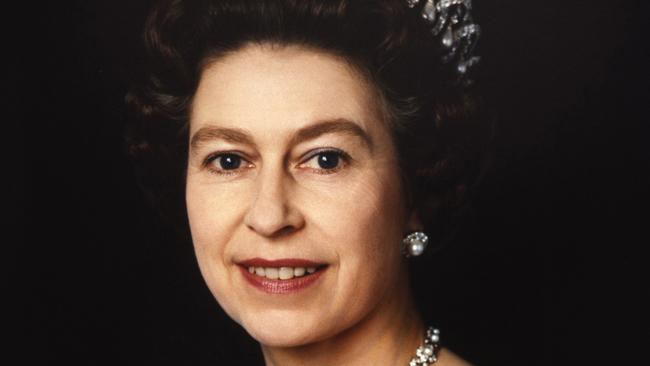Photographers discuss trying to make the Queen smile
The first time John Swannell photographed Queen Elizabeth II he asked the sovereign for a ‘little smile’. But ‘Her majesty doesn’t smile on cue. She smiles when she feels like smiling’.

The fourth time something did happen. A royal publicist took him aside and whispered in his ear: “Her majesty doesn’t smile on cue. She smiles when she feels like smiling.”
Brian Aris had better luck, by chance rather than design, when he photographed HRH. He dropped his camera, it fell into pieces and he fumbled around to reassemble it.
The queen looked on and laughed like she had just heard the funniest joke in the world. He lifted the reassembled camera and took a wonderful photograph.
When the Canadian musician and photographer Bryan Adams photographed the queen during the 2002 Golden Jubilee, he asked her to sit beside a clutch of wellington boots. The palace was nervous about the photograph but the boss liked it so it received the royal stamp of approval. A bit later it was incorporated into a Canadian postage stamp.
These are three of the numerous intriguing stories told in the engaging, informative documentary Portrait of the Queen, which was made during her reign.
Queen Elizabeth II was one of the most photographed people in history. The history of her portraits, from her coronation in 1953 onwards, is also a part-history of photograph itself.
In the 50s and 60s, for example, photographers hoped for a movie star look. In the 70s, fashion photography was in vogue.
The last photographer interviewed in this 77-minute film, Chris Levine, specialises in holographic portraits. In 2004 he asked the queen to sit before a lenticular camera that took 200 frames every eight seconds. She did and one of the photographs, in which she has her eyes closed, is another remarkable accident. Levine suggested the monarch rest for a moment. She did but the camera was still rolling.
This documentary, exempt from classification, is G-rated in content. It is the directorial debut of celebrated Italian photographer Fabrizio Ferri. The script is by Italian writer Paola Calvetti, based on her 2019 book Elisabetta II: Ritratto di Regina.
The focus is HRH and the photographers who took her portraits. Some of them, like their subject, are no longer with us, and this is where the actor Charles Dance, aka Lord Mountbatten in The Crown, comes in.
He reads, face to camera, so he can do a bit of acting as well, from the diaries of the likes of Cecil Beaton and Lord Snowdon to share their feelings when “shooting” the queen. In short, they were very nervous.
It’s fascinating to hear the living photographers remember how they got the now famous shot. Julian Calder decided to set his royal shoot “in the wilds of Balmoral”. What he said to make the queen look upwards and into the distance could have come from the script of the 1964 British war movie Zulu.
The moments where the queen interacts with the photographers, and looks at their work-in-progress, are rare but terrific.
David Montgomery had a tough brief from a newspaper to photograph the queen as a “more normal, everyday person”. The corgis came to the rescue.
Technically this film has its oddities. The photographer turned director, who is also the cinematographer, decided to film most of the interviews against a black background, with the subjects wearing black. The result is that they look a bit like floating heads, especially the bearded Charles Dance. However, this is a small, amusing strangeness. It’s the remarkable stories, and the spectacular images, that count in this life of a queen seen through a lens.
In 1965 Albert DeSalvo confessed to being the Boston Strangler. However he was not charged with any of the 13 murders, of women aged from 19 to 85, but with rape and robbery.
In 1967 he was convicted and sentenced to life imprisonment.
Within a year there was a Hollywood film starring Tony Curtis as DeSalvo and Henry Fonda as John S. Bottomley, the Massachusetts assistant district-attorney who headed the “Strangler Bureau” and procured the confession.
There have been other movies based on this notorious true crime case. Indeed one of them, The Strangler, came out in 1964 when it was still a live investigation.
So what can a new film do that’s any different? Director Matt Ruskin, who also wrote the script, explores two possibilities in Boston Strangler. His previous film, Crown Heights (2017), is also a true crime drama.
The main difference is a shift of perspective. The focus is the two journalists, Loretta McLaughlin (Keira Knightley) and Jean Cole (Carrie Coon), who covered the story for the Record American newspaper.
We do not see the face of DeSalvo (David Dastmalchian) until an hour into this 112-minute movie. Until then we see only a shadowy figure who poses as a tradesman to talk himself into women’s apartments.
In the first headlines, this killer who strangles women with their stockings is a “phantom”.
It is McLaughlin and Cole who, linking the murders, name him the Boston Strangler. When the investigating detectives see this on the front page, their collective response is “oh shit”. “He’s out there somewhere, laughing at us,’’ says Detective Jim Conley (Alessandro Nivola), who agrees to help McLaughlin, up to a point.
Knightley and Coon are strong in the roles. They are women, each married with primary school age children, fighting to make it in a sexist industry.
When the film opens, McLaughlin is on the lifestyle desk and her assignment is to review a new Sunbeam toaster. Cole is more seasoned but they are called “girl reporters” and the overall judgment is “what the hell do they know about police work?” The crime desk is staffed by six male reporters.
Yet they latch on to the story, with the lukewarm support of their editor (Chris Cooper). They report on the murders and on, in McLaughlin’s view, the city’s failure to protect its women. She, younger and less experienced than Coon, blurs the line between reporting and opinion.
As someone who did his time on the police rounds beat, I laughed in appreciation of the purple prose in McLaughlin’s reports. The women were “strangers in life, sisters in death”. Colourful but true enough. The reporters talk to the female friends and colleagues of the victims and to the mother of one of the younger ones.
This attention to the female side of the story is intrinsic to Margot Robbie’s LuckyChap Productions, which teamed with Ridley Scott’s Scott Free Productions to make this movie.
The clue to the second difference, which is not new but still interesting, is in the title. The Curtis-Fonda movie is The Boston Strangler.
This one is Boston Strangler and it raises some bold questions centred on the idea, long discussed, that there was more than one killer.
Other men who knew the victims become important characters.
So do men who DeSalvo met in jail.
These questions are yet to be answered, 50 years after DeSalvo was stabbed to death in prison. Twelve of the 13 murders remain unsolved.
“Everyone just wants it to be over,’’ Detective Conley says when DeSalvo confesses.
Yet McLaughlin believes the story is far from over. “Nobody bothered to get to the truth and people got away with murder.”




To join the conversation, please log in. Don't have an account? Register
Join the conversation, you are commenting as Logout